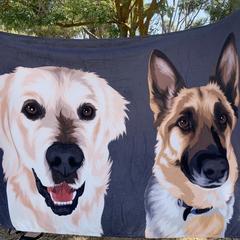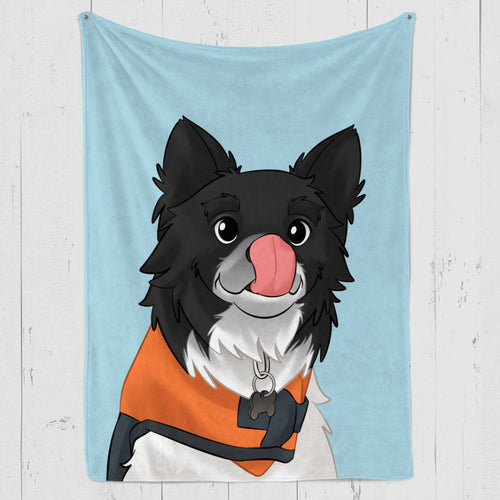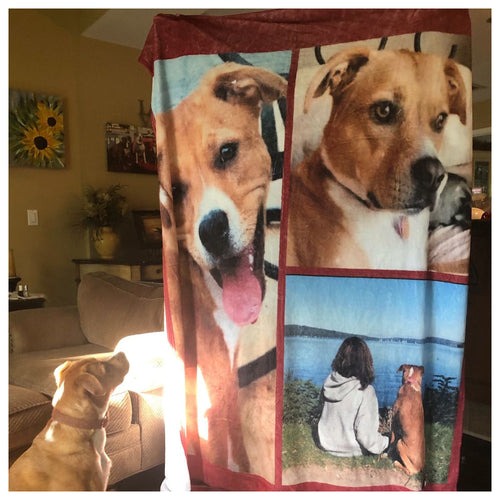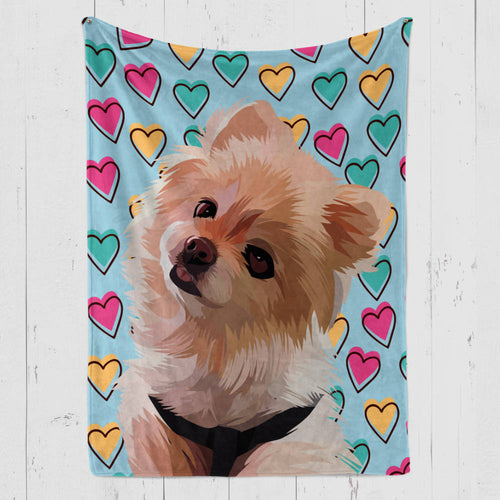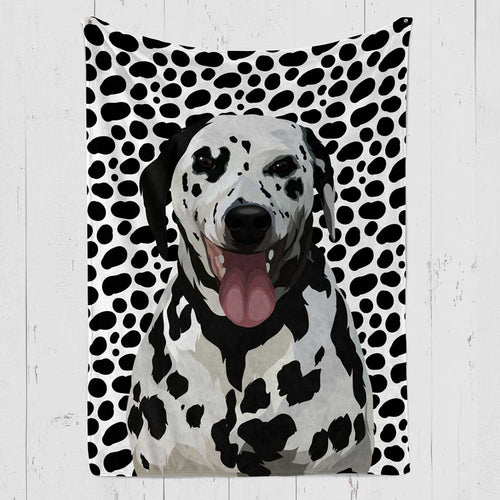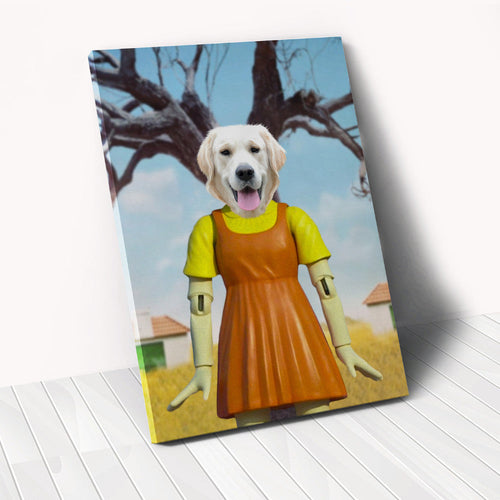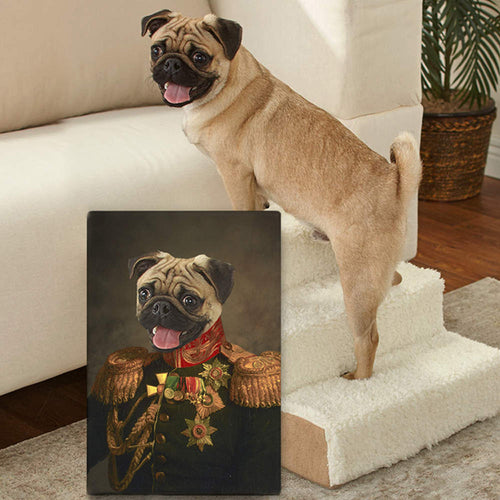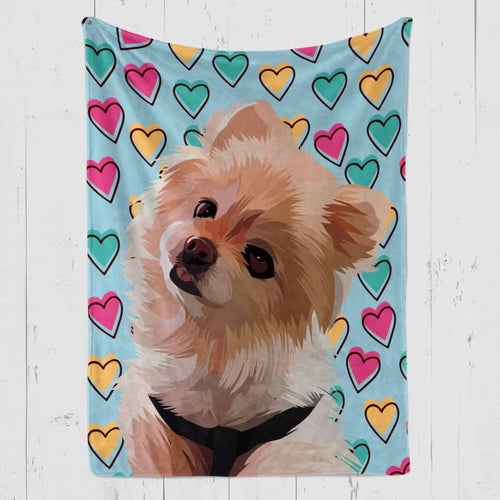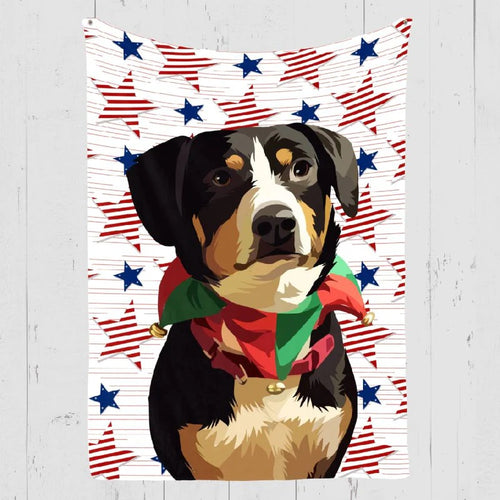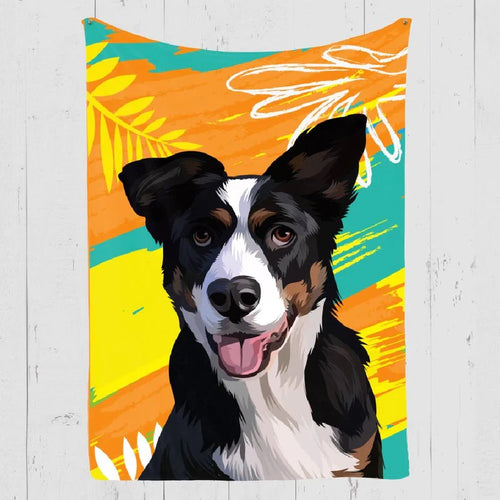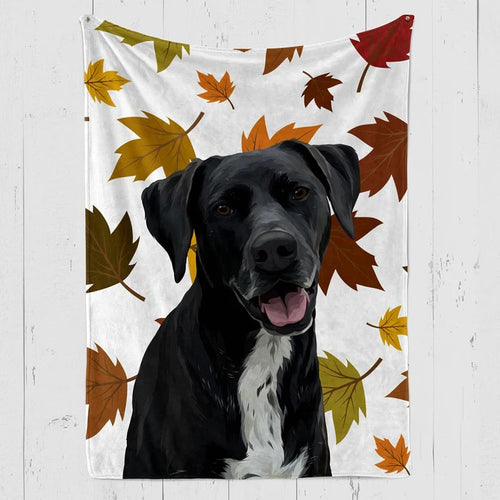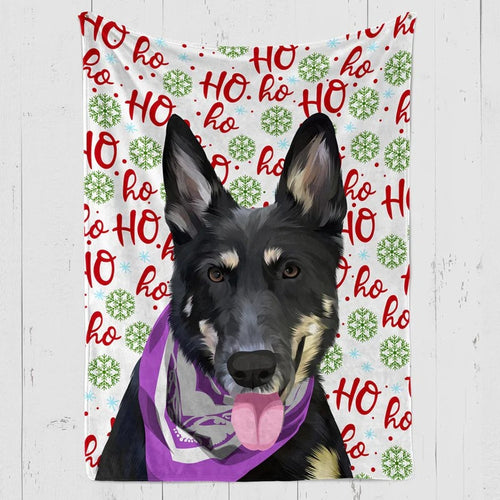
Even with the friendliest of dogs, training can be difficult. A dog's aggressive behavior, such as growling, lunging, loud barking or biting, should put its parents on alert. A dog that is already aggressive can become out of control without proper training, and a dog that is just starting to act hostile can end up violent or aggressive.
It can be quite difficult to force train an aggressive dog, especially as the dog gets older. The good news is that you can take steps to reduce or control your dog's aggressive behavior. It is important to remember that if you notice dog aggression or its early warning signs, you must contact a qualified trainer to help you develop this action plan. Since the stakes are so high, you shouldn't attempt this training alone. In this guide we will provide you with a detailed insight on how to train an aggressive dog. So, keep reading to know more about the same.
What are the Warning Signs of Aggression in Dogs?
Before training aggressive dogs, it is important to know the warning signs of aggression in dogs. Any dog can exhibit aggressive behavior, so it's important to look out for a pattern of warning indicators such as:
- Growls and screams
- Stiff body and a tail that wags rapidly
- Yawning or lip licking
- No eye contact
- The whites of their eyes could be seen
Many of these warning signs also indicate fear or dread, so not all dogs exhibiting them are necessarily aggressive.
What are the Reasons for Aggression in Dogs?
Dogs become aggressive for a variety of reasons, and these reasons can vary widely among dogs. To facilitate effective training, it is advisable to pay attention to the circumstances that cause aggression in your dog.
Fear
Dogs can become aggressive if they feel cornered or unable to escape a perceived threat. Dogs that have been abused, mistreated, or not properly socialized often exhibit fear-based aggression.
Possessiveness
One of the main reasons for aggression in dogs is possessive aggression, often known as resource guarding. Many dogs have a natural instinct to guard their possessions, including food, toys, beds and crates, even when there is no real danger. Dogs with possession aggression may growl when someone approaches their prized property or area, with food guarding being a particularly common example.
Territorial aggression
Some dogs have an innate sense of territoriality and will feel obligated to protect their territory, which may include your house or yard, from people they believe are intruders. In some situations this territorial violence may be directed only at strangers, while in others it may be directed at both friends and enemies. Dogs usually don't start acting territorial until they are fully grown.
Protective aggression
Dogs are pack animals that are naturally social and have a strong desire to protect other members of their pack. When a family member, friend or other animal is in danger, some dogs can become hostile.
Possession aggression
Dogs sometimes behave aggressively to assert their dominance. Status-seeking aggression, commonly referred to as dominance aggression, can occur when interacting with other canines. Because they are pack animals, dogs can create a hierarchy within their group, and the alpha dog may feel compelled to assert authority.
Do’s and Don'ts of Aggressive Dog Training
Although dog aggression can be difficult to deal with, in most situations it can be resolved with committed and persistent positive training. Here are some important rules to follow and some mistakes to avoid (many of these issues will be covered in more detail below):
When training aggressive dogs, you should:
Make sure your dog's hostility is not due to a medical condition with a thorough veterinary examination.
- Consult a trained dog behaviorist.
- Use desensitization and counterconditioning training when appropriate.
- Make sure your dog gets plenty of exercise and participates in canine enrichment activities.
- Keep a cool head when you are around your pet.
- Use reward-based training methods and positive reinforcement.
- If your dog bites someone or you suspect they might, use a muzzle.
- Create a safe training environment to give your dog the best chance for success.
- Take steps to avoid or alleviate your dog's triggers, such as providing extra space during meals or treating underlying anxiety.
- If necessary, use management tools and strategies to keep your dog away from people or other dogs, such as puppies.
- Especially if your vet or behaviorist advises that aggression may be related to the dog's gender, consider spaying or neutering your dog.
Avoid these mistakes when training aggressive dogs:
- If you are unsure of your ability to handle the situation safely, do not risk your safety or the safety of others and consider seeking professional help.
- Aggression should not be punished, especially growling, as this is your dog's way of expressing fear or discomfort.
- Avoid using outdated, ineffective training techniques such as dominance-based alpha dog training.
- Avoid using harsh training methods such as spikes or shock collars as they can make your dog more anxious and frustrated.
- When your dog is acting aggressively, avoid physical contact with him or picking him up, as this risks redirecting the bite.
- Don't expect a full recovery; instead, recognize that you manage aggression with training and possibly medication, but the underlying trigger may require more attention.
Tips & Treats to Help with Dog Aggression
Understanding what causes an aggressive dog to act out is the first step to learning how to train an aggressive dog.
Step 1:
Aggression in dogs develops as an emotional response to a variety of stimuli, including pain, fear, and even boredom. Although it may take some time, monitoring your pet and their interactions is an essential step.
Step 2:
Experts suggest a three-pronged approach to treating dog aggression, starting with limiting your pet's exposure to its triggers. This stage requires patience and work. At the same time, to reduce stress, you can try to avoid these triggers as much as you can.
Step 3:
Since contact with triggers is inevitable, you can help your dog bond with them by praising them for being calm around them. This methodical technique can change the way your dog views the trigger, potentially solving the problem once and for all.
Be sure to give your dog treats, toys, or lots of praise when your furry companion behaves well during training. Take your time and gradually introduce new ideas and environments to your dog. If your dog feels anxious around others, keep these encounters short, keep them under control (probably on a leash) and provide your puppy with constant reassurance.
Frequently Asked Questions:
What leads to a dog displaying aggression, and how can it be effectively managed?
Aggression in dogs can stem from factors like fear, prey drive, socialization issues, and territorial instincts, rather than malicious intent. Anxiety and fear are common underlying causes. Seeking guidance from a certified animal behaviorist is crucial for addressing your dog's aggression effectively.
What factors contribute to aggression in dogs?
Aggression in dogs can arise due to conflict, defensiveness, fear, status-related issues, possessiveness, food-guarding tendencies, and redirected aggression.
What are some indicators of aggression in dogs?
Signs of aggressive behavior in dogs may include intense staring, barking, biting, snarling, snapping, or lunging.
What steps can be taken when a dog unexpectedly displays aggressive behavior?
If a dog that typically behaves non-aggressively suddenly exhibits violent tendencies, it could be due to an underlying medical issue. Conditions such as hypothyroidism, severe injuries, and neurological disorders like encephalitis, epilepsy, and brain tumors might trigger this behavior.
Is it possible to transform an aggressive dog into a non-aggressive one?
Upon identifying the source of your dog's distress, collaborating with a professional trainer or veterinarian can help develop strategies to soothe your dog. With care and patience, it's feasible to nurture a calmer and more gentle demeanor in your dog.
Can I handle the training of my aggressive dog by myself?
Attempting to manage the complexities of aggressive behavior in your dog without professional assistance is not advisable. A trained professional can help identify the root cause of the hostility and develop effective management strategies.
Do specific dog breeds display higher levels of aggression?
Certain dog breeds or types exhibit inherited behaviors that might lead humans to perceive aggression differently. Just as individual canines differ, so do humans in their reactions to them.
What does positive reinforcement mean in the context of aggression training for dogs?
Positive reinforcement in training an aggressive dog involves enthusiastic human interactions (praise) and rewards, often in the form of delicious treats, over time.
How long does it take to train an aggressive dog effectively?
To achieve positive outcomes, comprehensive training for an aggressive dog should continue consistently for a minimum of three to eight weeks.
Are there medications that can help manage aggression in dogs?
Buspirone, a non-sedating anxiolytic, might be beneficial in treating generalized anxiety in dogs. While it has been associated with reducing aggression anecdotally, it's best reserved for treating anxiety in dogs that haven't displayed aggression towards people or other dogs before.
Can I take my aggressive dogs to public places?
Walking an aggressive dog is undoubtedly challenging and demands patience, persistence, and dedication. Pet owners who commit themselves to helping their animals, under suitable conditions, might observe early signs of progress. Proper leash handling is crucial when taking out an aggressive dog for a walk.
Is rehoming an aggressive dog necessary?
In certain situations, relocating an aggressive dog to a new home should be contemplated. For instance, the safest and simplest approach might involve returning the dog to its original owner, without children, especially if the aggression stems from fear-based triggers.
Conclusion
You can follow all the abovementioned tips on how to train an aggressive dog and see fruitful results in about three to eight weeks. Just like children, dogs need to be trained to behave well. In order to change his environment, you must first identify the broader problem that is causing his persistently hostile behavior. Once you know what is upsetting him, you can work with him and the trainer or vet to figure out how to calm him down. With a little love and patience, he can be made more submissive.

Reference links:
- https://www.hillspet.com/dog-care/behavior-appearance/training-aggressive-dogs?lightboxfired=true#
- https://www.thesprucepets.com/how-to-stop-dog-aggression-1118229#toc-signs-that-your-dog-may-become-aggressive
- https://www.caninejournal.com/aggressive-dog-training-tips/
- https://pethelpful.com/dogs/train-aggressive-dog-with-safety-word
- https://manypets.com/us/blog/aggressive-dog-training/
- https://www.pawtracks.com/dogs/training-aggressive-dogs/#dt-heading-how-to-train-an-aggressive-dog
- https://pethelpful.com/dogs/How-to-Walk-a-Dog-Who-is-Aggressive-Towards-other-Dogs
Latest Review on Woof Blankets
To have such a masterpiece by my side every day is a gift for me and my memories with Rex. Thank you WoofBlankets for such an opportunity to recreate his image on a blanket.Lara o’ Miguel US, California

COLLECTION WORTH EVERY PENNY
BEST SELLERS
-
Woofy Single Color Custom Pet Blanket
![Woofy Single Custom Pet Blanket – Woof Blanket]()
- -41%
BlanketsSHOP NOW- Regular price
- from $64.95
- Sale price
- from $64.95
- Regular price
-
$109.95 - Unit price
- per
Sold out -
Exclusive Christmas Custom Pet Blanket
![Exclusive Custom Pet Blanket]()
- -39%
BlanketsSHOP NOW- Regular price
- from $69.95
- Sale price
- from $69.95
- Regular price
-
$114.95 - Unit price
- per
Sold out -
Christmas Custom Pet Blanket
![Christmas Custom Pet Blanket - Custom Dog Blankets]()
- -40%
BlanketsSHOP NOW- Regular price
- from $69.95
- Sale price
- from $69.95
- Regular price
-
$115.95 - Unit price
- per
Sold out -
Watercolor Pet Portraits
![]() SHOP NOW
SHOP NOW- Regular price
- from $59.95
- Sale price
- from $59.95
- Regular price
-
- Unit price
- per
Sold out -
Woofy Christmas Custom Dog Blanket
![Woofy Christmas Custom Dog Blanket]()
- -39%
BlanketsSHOP NOW- Regular price
- from $69.95
- Sale price
- from $69.95
- Regular price
-
$114.95 - Unit price
- per
Sold out -
Modern Pet Owner Portrait
![]()
- -32%
CanvasSHOP NOW- Regular price
- from $84.95
- Sale price
- from $84.95
- Regular price
-
$124.95 - Unit price
- per
Sold out -
Woof Splash Custom Pet Blanket
![Woof Splash Custom Pet Blanket]()
- -39%
BlanketsSHOP NOW- Regular price
- from $69.95
- Sale price
- from $69.95
- Regular price
-
$114.95 - Unit price
- per
Sold out -
The Admiral - Custom Pet Portrait
![The Admiral - Custom Pet Portrait Online]()
- NEW
- -25%
CanvasSHOP NOW- Regular price
- from $59.95
- Sale price
- from $59.95
- Regular price
-
$79.95 - Unit price
- per
Sold out -
Wings of Loyalty - Custom Pet Portrait
![]()
- NEW
CanvasSHOP NOW- Regular price
- from $59.95
- Sale price
- from $59.95
- Regular price
-
- Unit price
- per
Sold out -
Pet Memorial Custom Photo Collage Blanket
![Personalized pet memorial quilt with photos]()
- -41%
BlanketsSHOP NOW- Regular price
- from $64.95
- Sale price
- from $64.95
- Regular price
-
$109.95 - Unit price
- per
Sold out -
Celestial Paws - Custom Pet Portrait
![]() CanvasSHOP NOW
CanvasSHOP NOW- Regular price
- from $59.95
- Sale price
- from $59.95
- Regular price
-
- Unit price
- per
Sold out -
The Loyal Soul - Custom Pet Portrait
![]()
- NEW
SHOP NOW- Regular price
- from $59.95
- Sale price
- from $59.95
- Regular price
-
- Unit price
- per
Sold out -
Cartoonized Pet Portraits (New)
![Cartoonized Pet Custom Portraits Online]()
- -36%
SHOP NOW- Regular price
- from $59.95
- Sale price
- from $59.95
- Regular price
-
$93.95 - Unit price
- per
Sold out -
The French Sailor - Custom Pet Portrait
![]()
- -25%
CanvasSHOP NOW- Regular price
- from $59.95
- Sale price
- from $59.95
- Regular price
-
$79.95 - Unit price
- per
Sold out -
The Policeman - Custom Pet Portrait
![]()
- NEW
- -25%
CanvasSHOP NOW- Regular price
- from $59.95
- Sale price
- from $59.95
- Regular price
-
$79.95 - Unit price
- per
Sold out -
The General - Custom Pet Portrait
![]()
- NEW
- -25%
CanvasSHOP NOW- Regular price
- from $59.95
- Sale price
- from $59.95
- Regular price
-
$79.95 - Unit price
- per
Sold out -
Woof Love Custom Pet Blanket
![Woof Love Custom Pet Blanket]()
- -39%
BlanketsSHOP NOW- Regular price
- from $69.95
- Sale price
- from $69.95
- Regular price
-
$114.95 - Unit price
- per
Sold out -
Summer Time Custom Pet Blanket
![Summer Time Custom Pet Blanket]()
- -39%
BlanketsSHOP NOW- Regular price
- from $69.95
- Sale price
- from $69.95
- Regular price
-
$114.95 - Unit price
- per
Sold out -
The Ambassador - Custom Pet Portrait
![The Ambassador - Custom Pet Portrait Online]()
- NEW
- -25%
CanvasSHOP NOW- Regular price
- from $59.95
- Sale price
- from $59.95
- Regular price
-
$79.95 - Unit price
- per
Sold out -
Fall In Love Custom Pet Blanket
![Fall In Love Custom Dog Blanket]()
- NEW
- -39%
BlanketsSHOP NOW- Regular price
- from $69.95
- Sale price
- from $69.95
- Regular price
-
$114.95 - Unit price
- per
Sold out -
The Classy Lady - Custom Pet Portrait
![The Classy Lady]()
- NEW
- -25%
CanvasSHOP NOW- Regular price
- from $59.95
- Sale price
- from $59.95
- Regular price
-
$79.95 - Unit price
- per
Sold out -
The Duke - Custom Pet Portrait
![The Duke - Custom Pet Portrait]()
- NEW
- -25%
CanvasSHOP NOW- Regular price
- from $59.95
- Sale price
- from $59.95
- Regular price
-
$79.95 - Unit price
- per
Sold out -
Dog In Suit- Custom Pet Portrait
![Dash Dog In Suit- Custom Pet Portrait Online]()
- NEW
- -25%
CanvasSHOP NOW- Regular price
- from $59.95
- Sale price
- from $59.95
- Regular price
-
$79.95 - Unit price
- per
Sold out -
The Princess - Custom Pet Portrait
![]()
- NEW
- -25%
CanvasSHOP NOW- Regular price
- from $59.95
- Sale price
- from $59.95
- Regular price
-
$79.95 - Unit price
- per
Sold out -
Modern Pet Portrait with One Mug
![Modern Pet Portrait with One Mug]()
- -25%
Print MaterialSHOP NOW- Regular price
- from $99.95
- Sale price
- from $99.95
- Regular price
-
$133.95 - Unit price
- per
Sold out -
The Aristocrat - Custom Pet Portrait
![The Aristocrat - Custom Pet Portrait At Best Price]()
- NEW
- -25%
CanvasSHOP NOW- Regular price
- from $59.95
- Sale price
- from $59.95
- Regular price
-
$79.95 - Unit price
- per
Sold out -
Single Color Custom Blanket with 1 Mug
![Single Color Custom Blanket with 1 Mug]() BlanketsSHOP NOW
BlanketsSHOP NOW- Regular price
- from $99.95
- Sale price
- from $99.95
- Regular price
-
- Unit price
- per
Sold out -
Single Color Custom Blanket with 2 Pillows
![Single Color Custom Pet Blanket with 2 Pillows]()
- -21%
BlanketsSHOP NOW- Regular price
- from $99.95
- Sale price
- from $99.95
- Regular price
-
$125.95 - Unit price
- per
Sold out -
The Dog in Suit Custom Pet Mug
![]()
- -20%
MugsSHOP NOW- Regular price
- $39.95
- Sale price
- $39.95
- Regular price
-
$49.95 - Unit price
- per
Sold out -
Angel Custom Pet Mug
![]()
- -20%
MugsSHOP NOW- Regular price
- $39.95
- Sale price
- $39.95
- Regular price
-
$49.95 - Unit price
- per
Sold out -
This Human Belongs To - Custom Pet Mug
![]()
- NEW
- -20%
MugsSHOP NOW- Regular price
- $39.95
- Sale price
- $39.95
- Regular price
-
$49.95 - Unit price
- per
Sold out -
It's Not Dog Hair Custom Pet Mug
![]()
- NEW
- -20%
MugsSHOP NOW- Regular price
- $39.95
- Sale price
- $39.95
- Regular price
-
$49.95 - Unit price
- per
Sold out -
My Dog Is My Valentine Custom Pet Mug
![]()
- NEW
- -20%
MugsSHOP NOW- Regular price
- $39.95
- Sale price
- $39.95
- Regular price
-
$49.95 - Unit price
- per
Sold out -
3 Photos With Message Custom Pet Mug
![]()
- NEW
- -20%
MugsSHOP NOW- Regular price
- $39.95
- Sale price
- $39.95
- Regular price
-
$49.95 - Unit price
- per
Sold out -
My Valentine Has Four Legs- Personalized Mugs
![]()
- NEW
- -20%
MugsSHOP NOW- Regular price
- $39.95
- Sale price
- $39.95
- Regular price
-
$49.95 - Unit price
- per
Sold out -
Dog Mamma Custom Pet Coffee Mug
![]()
- -20%
MugsSHOP NOW- Regular price
- $39.95
- Sale price
- $39.95
- Regular price
-
$49.95 - Unit price
- per
Sold out -
Uncle Sam - Custom Pet Portrait
![]()
- NEW
- -25%
CanvasSHOP NOW- Regular price
- from $59.95
- Sale price
- from $59.95
- Regular price
-
$79.95 - Unit price
- per
Sold out -
The Revolutionary Emperor - Custom Pet Portrait
![]()
- NEW
- -25%
CanvasSHOP NOW- Regular price
- from $59.95
- Sale price
- from $59.95
- Regular price
-
$79.95 - Unit price
- per
Sold out -
The Princess Paws - Custom Pet Portrait
![]()
- -25%
CanvasSHOP NOW- Regular price
- from $59.95
- Sale price
- from $59.95
- Regular price
-
$79.95 - Unit price
- per
Sold out -
The Dark Crusader Knight - Custom Pet Portrait
![]()
- -25%
CanvasSHOP NOW- Regular price
- from $59.95
- Sale price
- from $59.95
- Regular price
-
$79.95 - Unit price
- per
Sold out

